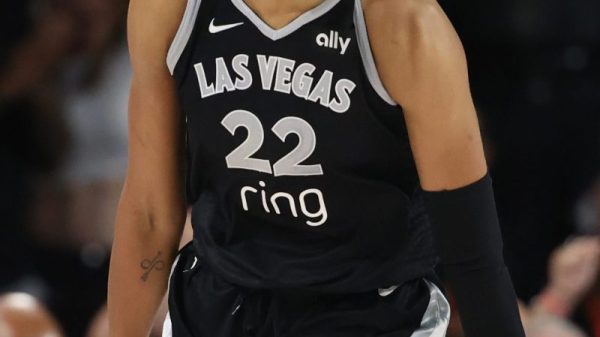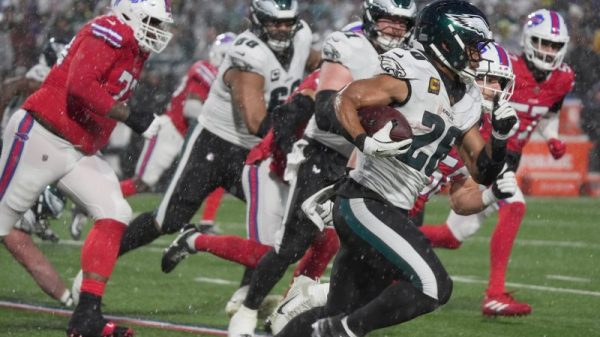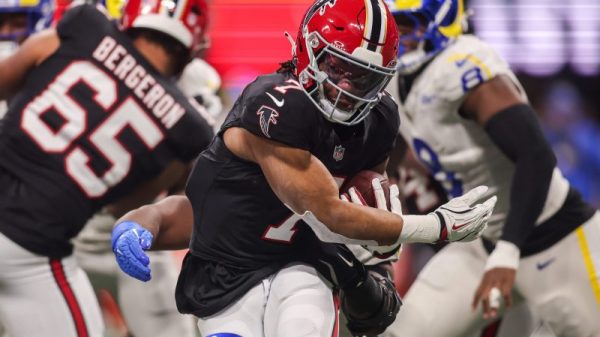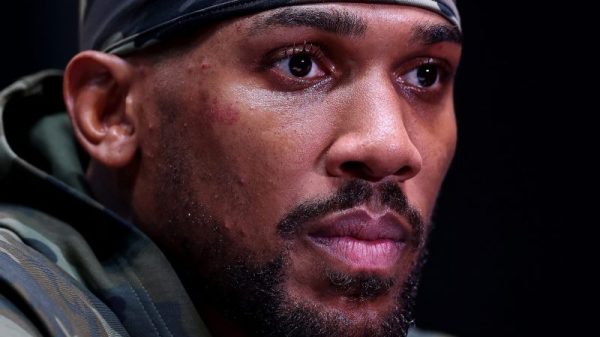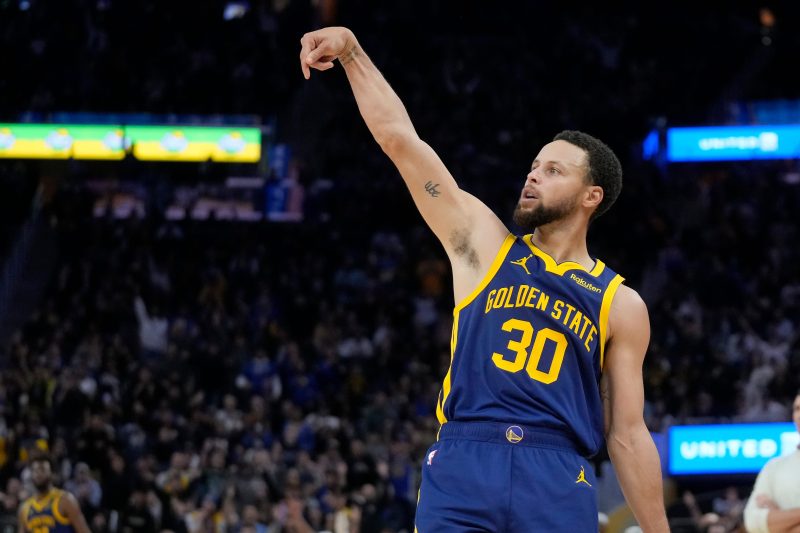From Steph Curry to Sabrina Ionescu, from Damian Lillard to Caitlin Clark, the 3-point shot rules across all levels of basketball.
One of the NBA’s biggest made shots in the past decade is a 3-pointer – then-Cleveland guard Kyrie Irving’s winning 3 against Golden State in Game 7 of the 2016 Finals.
The 3-point shot’s importance cannot be overstated. Consider that in LeBron James’ rookie year – 21 seasons ago – teams were attempting 14.9 3-pointers per game. This season, teams are shooting 35.0.
However, two Syracuse University professors are trying to reshape the way teams view and attempt 3-pointers.
In a paper titled, ‘Estimating NBA Team Shot Selection Efficiency from Aggregations of True, Continuous Shot Charts: A Generalized Additive ModelApproach,’ Shane Sanders and Justin Ehrlich analyzed seven seasons of shot chart data and discovered a ‘dispremium’ has been placed on 3-point shots and that the value of a two-point shot is greater than the value of a 3-pointer when taking into account foul shots.
‘We found that they kind of went in too far into the three point revolution, and I would say mild to moderate scaling back is in order,’ Sanders told USA TODAY Sports. ‘Now, this doesn’t mean that we can’t achieve the spacing benefits that the modern NBA offense runs on. And it doesn’t even mean that Curry or Lillard shouldn’t be pulling up from anywhere along the arc, but it does mean maybe some (players) should be tempering their proclivity to pull up from beyond the arc.’
Looking at extensive shot chart data from 2016-2017 through 2022-2023, Sanders and Ehrlich, professors at Syracuse’s David B. Falk College of Sport and Human Dynamics, found that the expected value of a 2-point attempt is worth 1.096 points and the expected value of a 3-point attempt is worth 1.083 points in the 2022-23 season. The true value, which takes into account free throw attempts, of a 2-point shot is 1.181 points and the true value of a 3-point shot is 1.094 in the same season.
In the process, they have created a new shot chart for teams and players that incorporates missed shots that included a foul but are not counted as shot attempts in field goal percentages. Ehrlich was in search of a better shot chart, and Sanders had begun to hear that perhaps too many 3s were attempted. Together, they found answers that could impact the next wave of basketball strategy.
The study is a finalist in the 2024 research paper competition at the prestigious MIT Sloan Sports Analytics Conference on Friday and Saturday in Boston. The conference is headed by co-founders and co-chairs Daryl Morey, the Philadelphia 76ers’ president of basketball operations, and Jessica Gelman, CEO of the Kraft Analytics Group.
These research papers can be influential and have potential implications on what happens in the evolution of games. Beside presenting their paper, Sanders and Ehrlich have sent their paper to analytics staffers at NBA teams who have told the professors “this is exciting and this is something that they’re going to consider going forward. And we have good relationships with a number of teams and even some assistant coaches,” Sanders said.
This information is sweet string music to San Antonio Spurs coach Gregg Popovich’s ears. He has long expressed his dismay over the 3-point shot’s growth and focus of modern offenses.
Sanders and Ehrlich are not suggesting an overhaul and a return to days when teams took 14 3s per game. The idea is to maximize offensive efficiency by being more judicious about taking 3s – and in particular, who is taking them. A player who is about a 32% 3-point shooter and used to help stretch the floor should limit 3s.
‘We started seeing that there was value added in the mid-range shots by including the additional information with free throws – certainly players just like James Harden,’ Ehrlich said.
They’re also not advocating for long 2s. Taking mid-range shots in the 8-10 feet range is more preferable for certain players, and because of the data they have mined, the belief is that scoring will increase if their theory is applied correctly.
There are corollary aspects of their research. In the past two decades, 2-point percentage has increased significantly and 3-point percentage has not increased as much. In the 2003-04 season, teams shot 46% on 64.9 2-point attempts per game and 34.7% on 14.9 3s per game. In 2023-24, teams shoot 54.6% on 54.3 2-point attempts per game and 36.7% on 35 3-point attempts per game.
‘It’s not that 3s are becoming less valuable, it’s that 2s are becoming more valuable,’ Ehrlich said.
The increase in percentages inside and outside the 3-point line illustrate the way the game is played with pace and space and the incredible amount of skilled offensive players. It’s all about taking the right 2s and 3s.
Sanders has a deep interest in game theory, and in this specific case, how shooting can be more efficient with the possibility of diversifying the offense and making it less predictable for the defense.
By getting this information to more people, Sanders and Ehrlich, who consult for a Euroleague team and college basketball teams, hope to see more teams apply the data to game situations.
As long as Curry and all the other great shooters continue to launch 3s.
Follow NBA reporter Jeff Zillgitt on social media @JeffZillgitt







